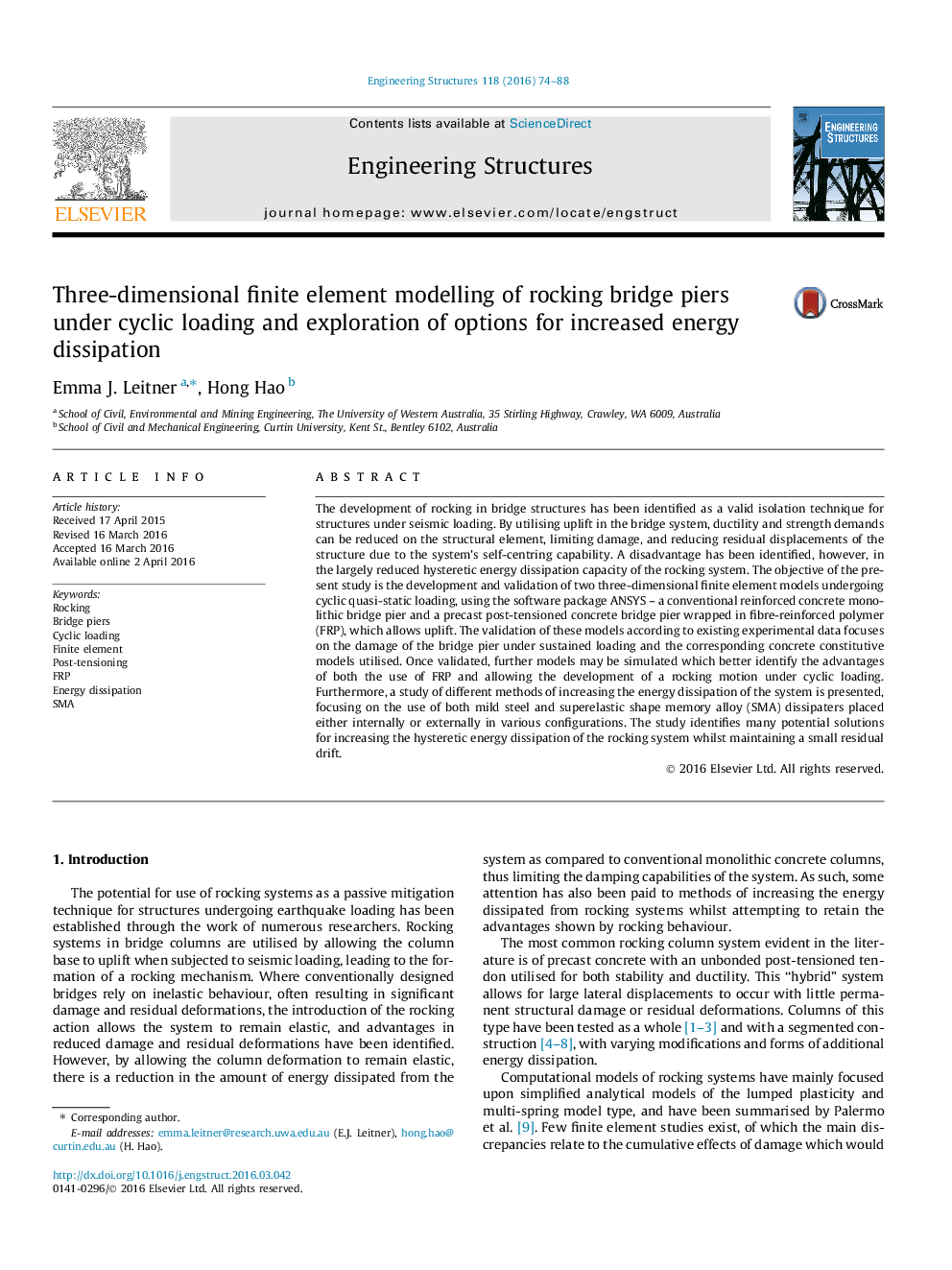| کد مقاله | کد نشریه | سال انتشار | مقاله انگلیسی | نسخه تمام متن |
|---|---|---|---|---|
| 265724 | 504325 | 2016 | 15 صفحه PDF | دانلود رایگان |
• Three-dimensional finite element models of a concrete bridge column were developed.
• Models allow benefits of FRP and column rocking under cyclic loading to be studied.
• Rocking columns reduce permanent damage but lack energy dissipation.
• The addition of steel and SMA energy dissipation bar configurations are explored.
• Dissipation bars can increase dissipation whilst maintaining small residual drift.
The development of rocking in bridge structures has been identified as a valid isolation technique for structures under seismic loading. By utilising uplift in the bridge system, ductility and strength demands can be reduced on the structural element, limiting damage, and reducing residual displacements of the structure due to the system’s self-centring capability. A disadvantage has been identified, however, in the largely reduced hysteretic energy dissipation capacity of the rocking system. The objective of the present study is the development and validation of two three-dimensional finite element models undergoing cyclic quasi-static loading, using the software package ANSYS – a conventional reinforced concrete monolithic bridge pier and a precast post-tensioned concrete bridge pier wrapped in fibre-reinforced polymer (FRP), which allows uplift. The validation of these models according to existing experimental data focuses on the damage of the bridge pier under sustained loading and the corresponding concrete constitutive models utilised. Once validated, further models may be simulated which better identify the advantages of both the use of FRP and allowing the development of a rocking motion under cyclic loading. Furthermore, a study of different methods of increasing the energy dissipation of the system is presented, focusing on the use of both mild steel and superelastic shape memory alloy (SMA) dissipaters placed either internally or externally in various configurations. The study identifies many potential solutions for increasing the hysteretic energy dissipation of the rocking system whilst maintaining a small residual drift.
Journal: Engineering Structures - Volume 118, 1 July 2016, Pages 74–88
